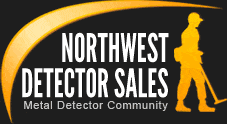
Metal Detecting Terminology Beginners Should Know
Finding items buried beneath the ground is fun but can take a lot of work. Luckily, valuable items contain metal that specialized sensors can detect.
Many hobbyists take up metal detecting to get outside and find buried valuables. However, knowing the lingo is the first step to becoming an expert. If you’re a beginner, here’s the metal detecting terminology you should know.
Audio Response
Some metal detectors have audio response capabilities that allow users to determine the depth of detected items. The most rudimentary metal detectors provide a short or long ping. However, advanced models can determine the type of metal, as well.
Metal detectors generate an electromagnetic field in the coil that focuses its energy toward the ground. A quiet audio response means you’re moving away from the item, while a louder response means you’re moving toward it.
Drift
Drift is another crucial metal detecting term that beginners should learn. It refers to the subtle changes in sensitivity due to the battery level, temperature, and other factors. High-quality devices can ignore external interference for more accurate results.
If you’re getting a lot of drift while metal detecting, it may be due to a substandard unit or faulty battery. It can waste time and energy if you keep getting false positives due to poor reception. Fortunately, you can purchase quality machines from metal detector suppliers to ensure your device is working correctly.
Gridding
While combing the sand for items can be fun, gridding can help you scan an area or region if you want to take a more disciplined approach. This method requires you to move back and forth in a grid pattern for maximum coverage.
The best part about gridding is that you probably won’t miss anything. However, it can take some time and effort to do it right. In the past, people would use chains to mark the covered areas. Today, you can purchase a GPS unit to make the task more manageable.
Plugging
Plugging is another combing technique you can use to ensure you don’t miss any valuables. Items with low metal content are more difficult to detect from the surface. By digging a small hole in the ground, you can detect items at a lower depth.
Limiting digging to a few small patches ensures you don’t tear up the landscape while searching for items. Check local laws and regulations to ensure metal detecting is allowed in that area.
Make the Most of Your Hobby
Using a metal detector can pay off if you find valuable items or want to have fun while searching. Knowing these best practices will help you maximize your time. By learning the metal detector terminology beginners should know, you’ll be all set to enjoy your search!

